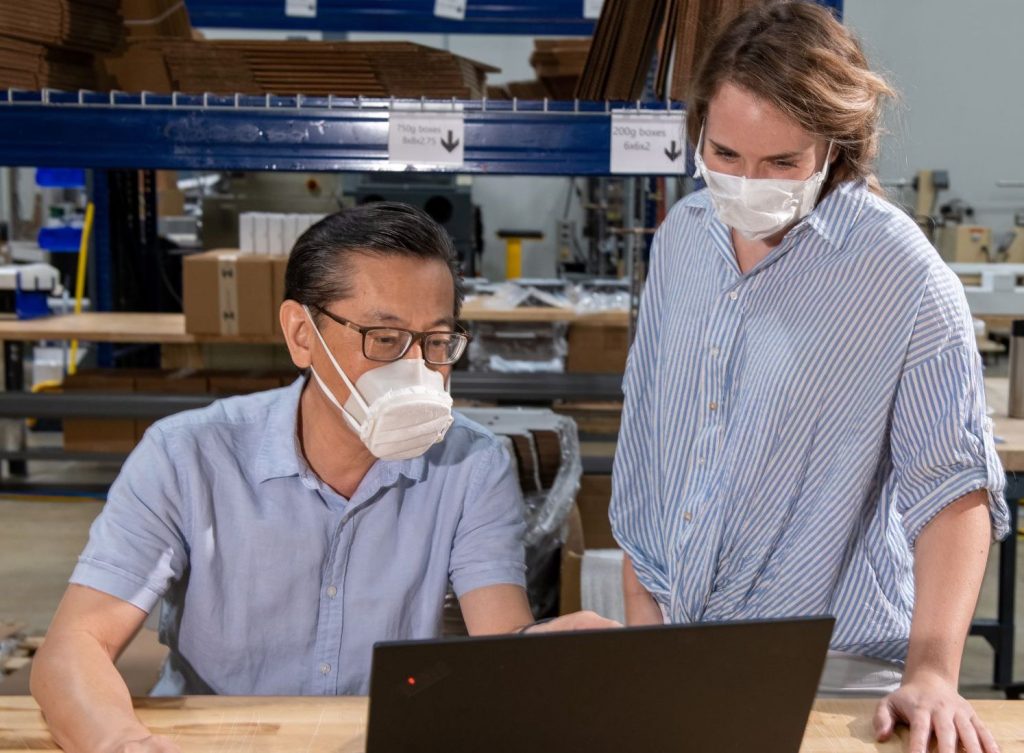Somerset Community College in Kentucky has developed a project, the Rapid Response Additive Manufacturing Initiative (RRAMI), that aims to deliver a statewide rapid 3D printing response capable of manufacturing critical supplies in the event of future emergencies such as Covid-19.
Between four and six college sites across Kentucky that are already equipped with low-cost 3D printing equipment and trained experts will be initially involved in the project. Having received federal funding in the summer of 2020, the RRAMI project is now preparing to simulate its first mock disaster drill to test the capabilities of the system on February 1st.
“The RRAMI system is something that we have been passionate about and working toward ever since the Covid-19 shutdown began,” said Eric Wooldridge of Somerset Community College (SCC), co-developer of the initiative. “The ability to instantaneously utilize a multitude of 3D printers, from one side of Kentucky to the other with only a single site operator, and all make the exact same product, is truly a breakthrough of manufacturing technology.”
3D printing response to Covid-19
Throughout the Covid-19 pandemic, professional additive manufacturing providers, makers, and designers within the 3D printing community across the globe rallied to respond to the crisis. Many volunteered their respective skills to ease supply chain pressure, with others putting out calls to action and co-ordinating manufacturing efforts to get vital supplies like PPE to those who needed it.
3D printing was able to fill gaps in the supply chain of PPE and other vital products such as ventilators and ventilator components, and swabs for Covid tests. The RRAMI system hopes to further showcase 3D printing’s potential as not only a back-up for supply chain disruption, but how it can also be used as a unified statewide manufacturing system in the future.
The RRAMI network
Originally developed by Wooldridge and Heather Beebe at SCC, the RRAMI network currently includes five Kentucky Community and Technical College System (KCTCS) sites. Joining SCC in the project is Jefferson Community and Technical College (JCTC), Owensboro Community and Technical College (OCTC), Madisonville Community College (MCC), and Southcentral Kentucky Community and Technical College (SKYCTC).
These college sites are located in regions of potential need should a manufacturing or supply chain emergency occur in the future, and are equipped with additive manufacturing equipment and know-how.
The RRAMI mock disaster drill will determine how quickly and effectively the coordinated system of remote 3D printing production sites can produce products that would be necessary in an emergency event.

The mock disaster drill
Beginning at 9am EST on February 1st, the mock disaster drill will last for 72 hours. The test scenario involves a new strain of coronavirus that is shutting down the country, and subsequently manufacturing operations have ceased and shipping routes are closed, leading to a breakdown in the supply chain of vital products such as personal protective equipment (PPE). In the scenario, the RRAMI network has been asked to respond to the crisis to provide PPE to first responders and essential workers in Kentucky and further afield.
The idea of the RRAMI in this type of situation is for member sites to transition their use of additive manufacturing for education to “disaster response”, and plug the gaps that have arisen in the supply chain. As the RRAMI project lead, the SCC will upload optimized gcodes for the project-specified 3D printers in the RRAMI network to a shared cloud drive. The member sites will then use these codes to begin production.
The first test product to be printed during the mock disaster drill is a 3D printed headband that can be quickly assembled with Plexiglas and elastic to form a face shield. During the 72 hours, member sites will also collect production data for real-time evaluation to track quantity output, quality control, equipment specification, speeds, and success rates. The data will also provide a baseline for how quickly the RRAMI network can produce products on-demand in emergency situations.
Wooldridge continued: “As we prove the system out and continue to add more sites and 3D printers, just imagine the potential not only for emergency production support but also just commercial fabrication as well, a statewide unified body manufacturing system that can produce in scalable volumes, and pivot from one product to the next almost instantly. It will represent a limitless opportunity for Kentucky.”
SCC will provide real-time data feeds of the mock disaster drill’s progress and results when it gets underway on February 1st.
Subscribe to the 3D Printing Industry newsletter for the latest news in additive manufacturing. You can also stay connected by following us on Twitter and liking us on Facebook.
Be sure to subscribe to the Another Dimension podcast on your chosen podcast player to make sure you never miss an episode.
Looking for a career in additive manufacturing? Visit 3D Printing Jobs for a selection of roles in the industry.
Featured image shows the 3D Systems Stopgap Face Mask. Photo via 3D Systems.



